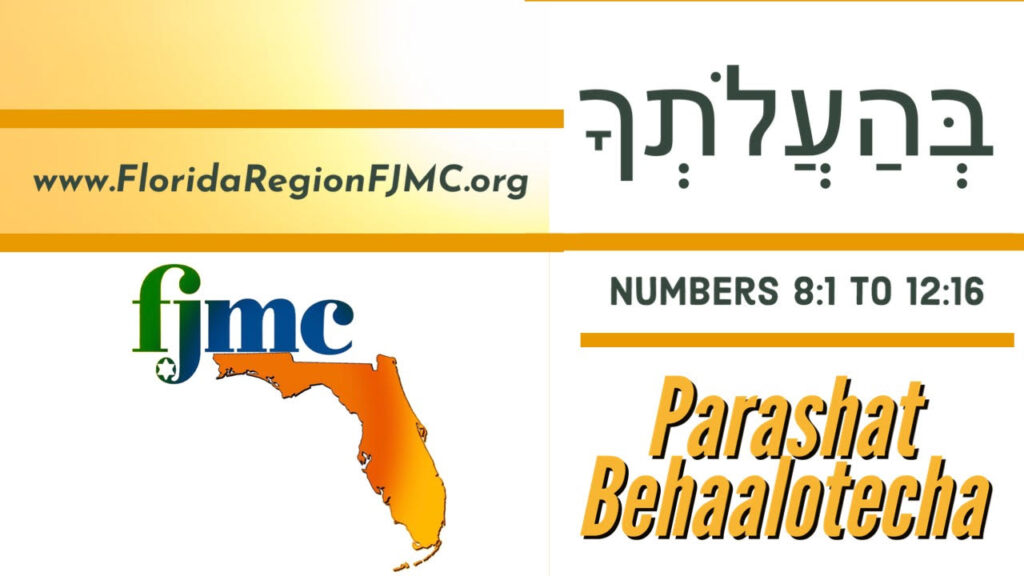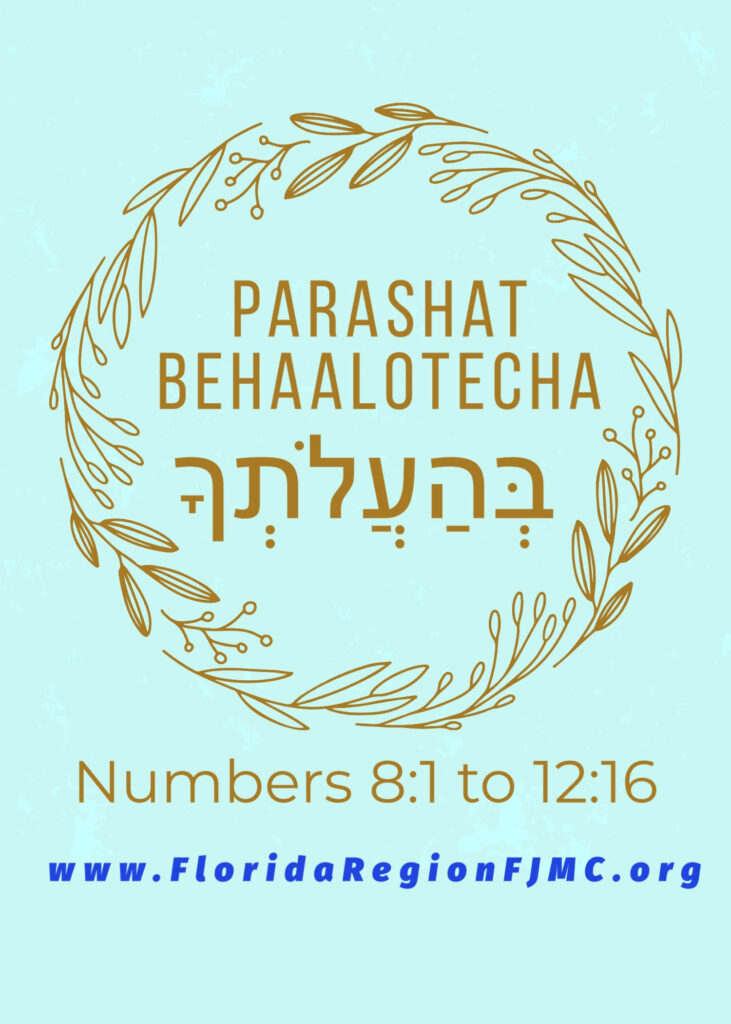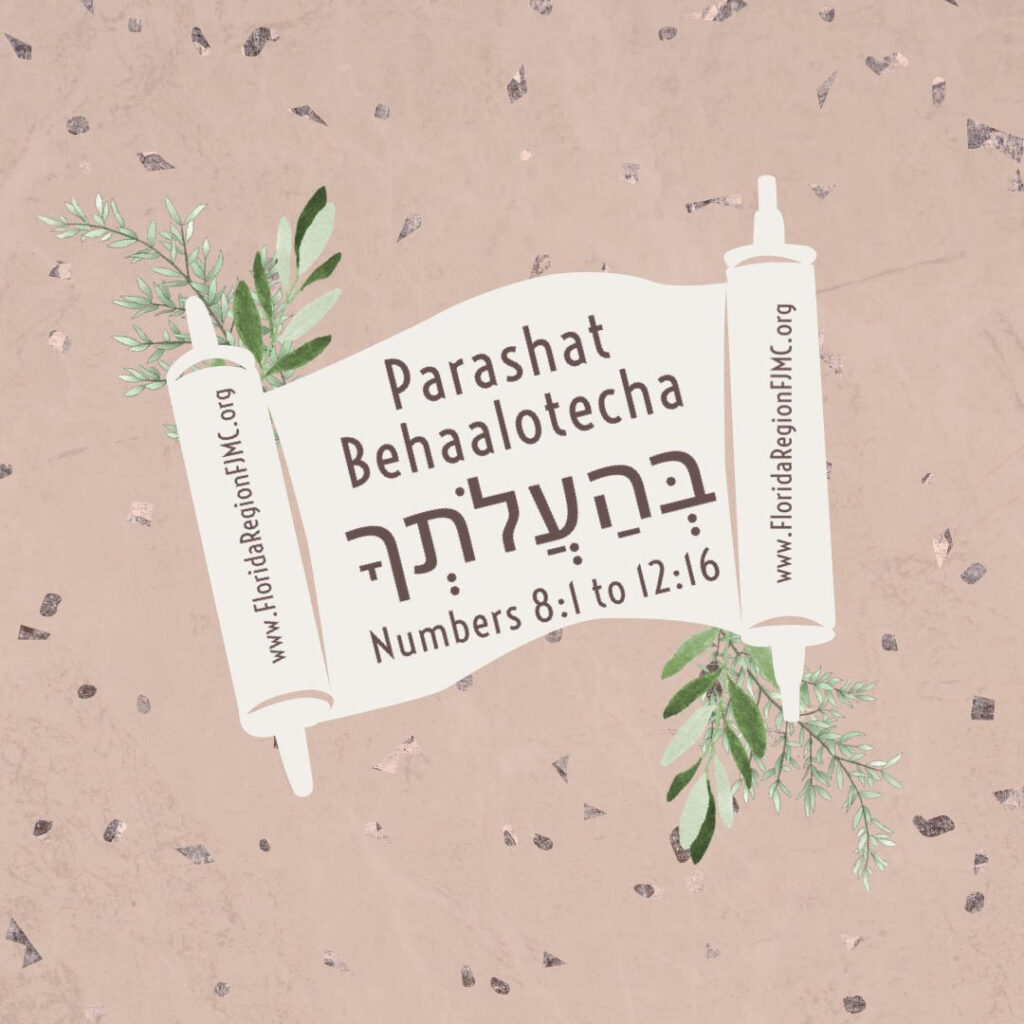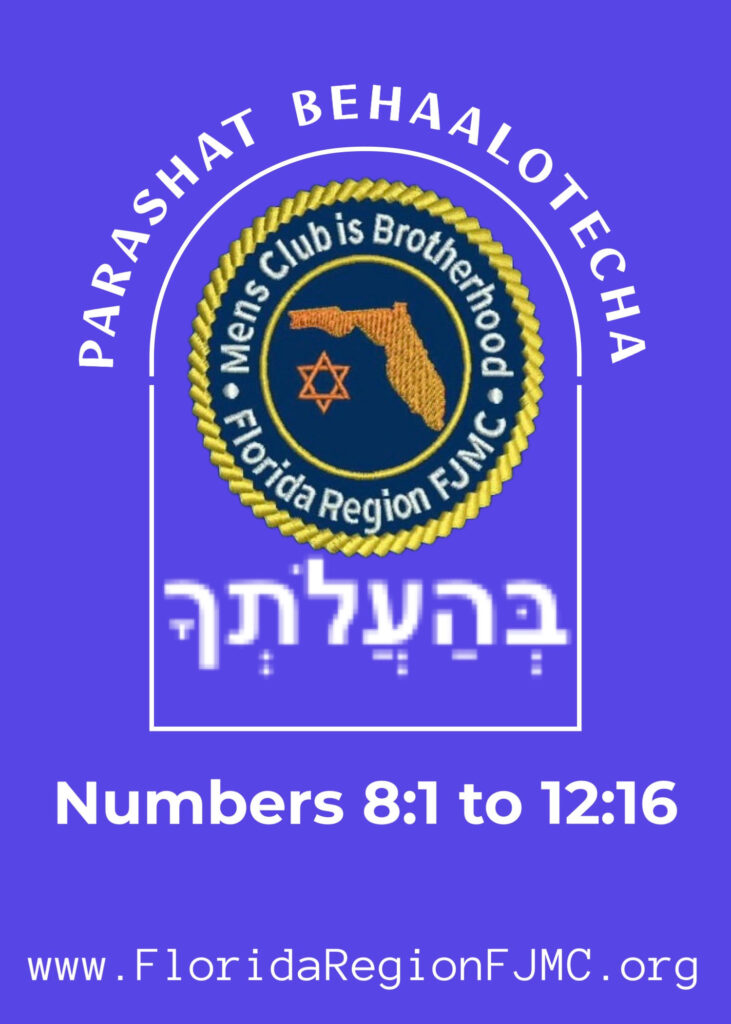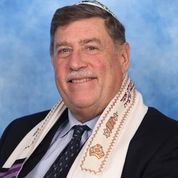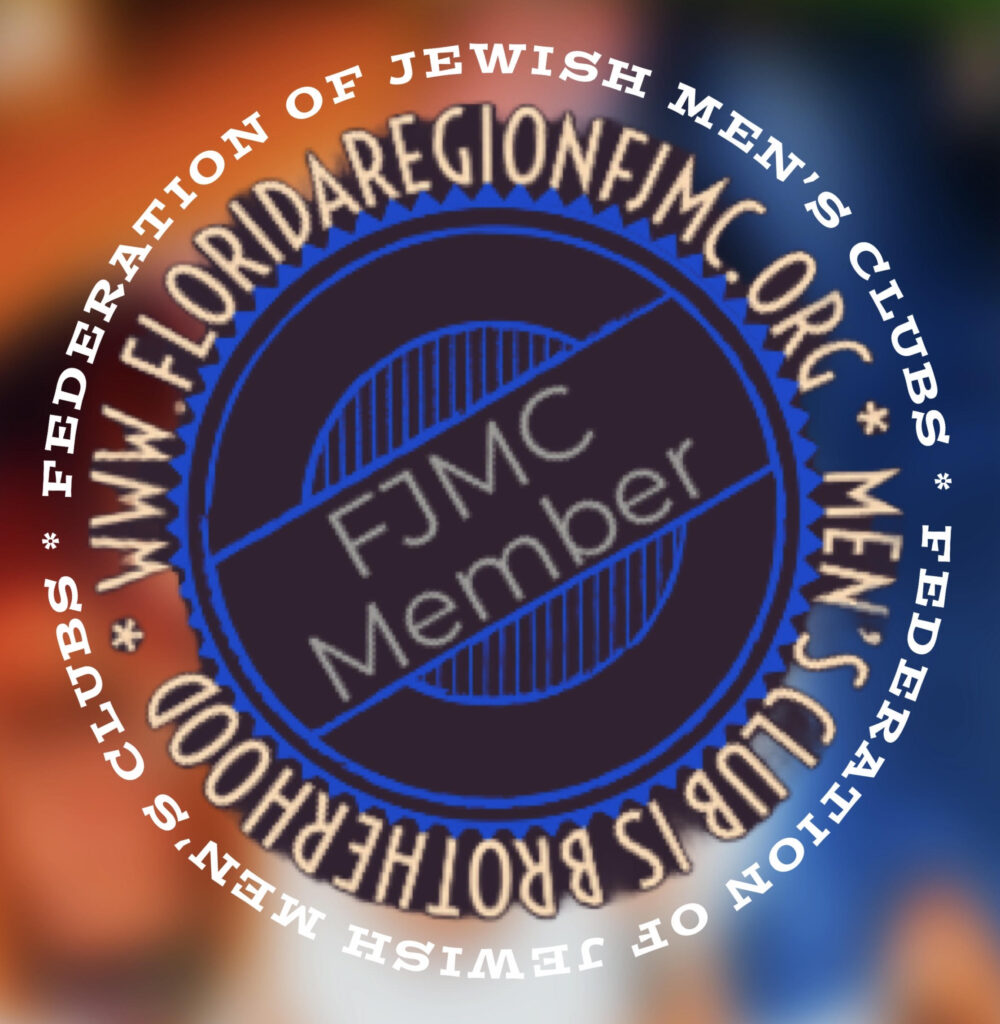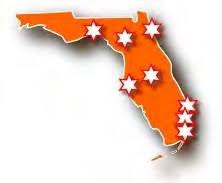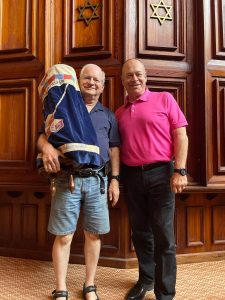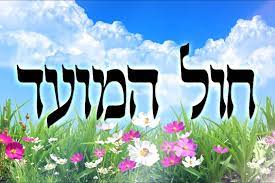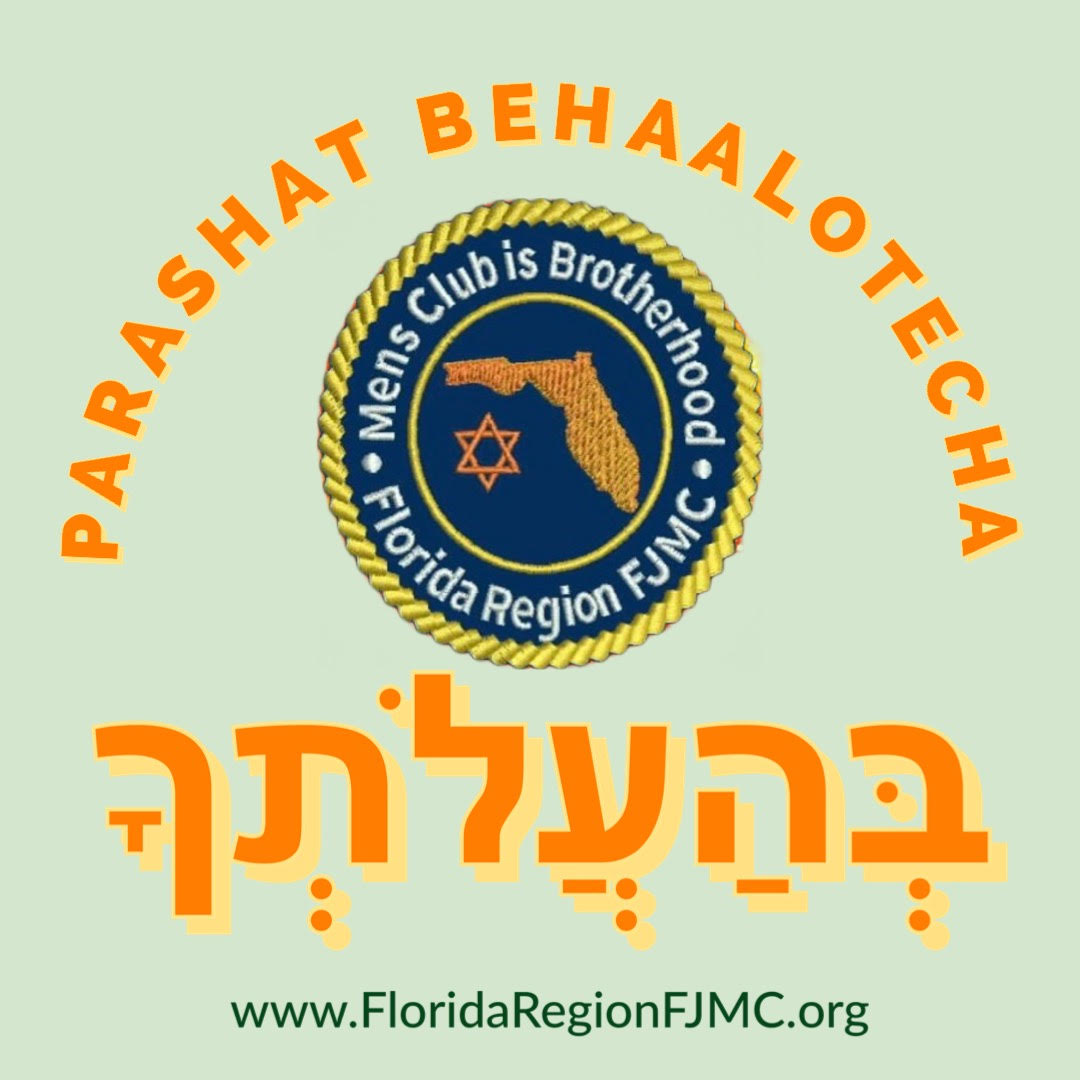
When you Choose Shabbat, you choose to learn that every Shabbat is different and special. This week we read from Parashat Behaalotecha (בְּהַעֲלֹתְךָ), the 36th weekly Torah portion in the annual cycle of Torah readings.
According to Wikipedia, Behaalotecha (בְּהַעֲלֹתְךָ), Numbers 8:1 to 12:16, contains 7,055 Hebrew letters, 1,840 words, 136 verses and makes up 240 lines of the Torah scroll.
Rabbi Michael D Klein of Temple Torat Emet offers his insights on this week’s Torah reading, Behaalotecha for Shabbat, June 14, 2025 aka 18 Sivan 5785 :
“The Sedra Behaalotecha begins with three very positive events. After all the princes of each tribe brought their offerings to the Mishkan, G-d commands the Kohanim to light the Menorah as an enduring symbol of G-d’s eternal presence for all to witness. The Sages teach that this represents the return of G-d’s Shechina to the lower world which had been withdrawn after the sin of Adam and Eve in the Garden of Eden.
The second major event is the mustering of the tribes with the sounding of the silver Shoferot. These were used to gather the tribes to announce the upcoming months and holidays or to prepare for wars which would inevitably transpire.
The third major positive event is the commandment to observe the Pesach Sheni-the second Passover- which is an addendum to the original commandments and represents an adaptation of the Halacha to accommodate the possibility that people might be unclean during the first Passover of perhaps be traveling and too far away to prepare. This is revolutionary in scope because it teaches us the practical necessity of adding to Halacha in order to take special circumstances into account.
Unfortunately, the positivity found in the first half of Behaalotecha does not continue. The mixed multitude used the pretense of being weary of the Manna to foment a series of rebellions against Moses lusting after meat which they claim was available in Egypt. Moses is commanded by G-d to share his prophetic spirit with 70 of the elders who, it was hoped, would assuage the rebellion, but to no avail. The rebellion further deteriorates as Miriam and Aaron both complain against Moses’ wife and Miriam is afflicted with Tzaraat because of her Lashon Hara. Moses prays for her forgiveness and she is shut away for seven days.
One may ask, how can the positivity of the first part of the Sedra deteriorate so rapidly that the very authority of Moses is challenged? One may argue that there are times when things are going smoothly, we forget where are blessings are from. This is the affliction of the generation which was liberated from Egypt. They could not separate themselves from slave mentality and thus could never fully appreciate or comprehend the amazing and awesome gifts that G-d had granted them. Let us always be grateful for the gifts we receive and never digress into the mentality of that generation”.
Questions to consider:
- Who are Eldad and Medad and why are they mentioned?
- How does the Law of Pesach Sheni represent a turning point in the way Halacha is created?
- What other events in the Torah represent new Halacha in the Torah?
- How is the sin of Miriam connected to Nega Tzaraat?
Rabbi Michael D. Klein attended Yeshiva College of South Florida and served as Torah Reader, Hebrew teacher, Chazzan and spiritual leader of various synagogues throughout South Florida. In January 2015 he became Ritual Director, Bnai/Bnot Mitzvah instructor and 7th grade Hebrew instructor for Temple Torat Emet of Boynton Beach. In October 2019 he was accepted into an accelerated track and received his smicha from Yeshiva Adath Wolkowisk and has been the Rabbinic leadership of Temple Torat Emet since August 2020. In September of 2022 he was appointed Rabbinic and Spiritual Advisor of the Florida Region of FJMC.
Choose Shabbat; choose to celebrate, to light candles, sing songs and learn a little Torah.
This moment of Jewish Learning is brought to you by the Florida Region of FJMC International (FJMC). We are part of a confederation of over 200 Jewish Men’s Clubs and Brotherhoods representing over 20,000 members across the United States, Canada, Latin America, and beyond. Learn more about how your Jewish Men’s Club or Brotherhood can affiliate with the FJMC at: https://fjmc.org/for-clubs/affiliating-with-the-fjmc/.
The Florida Region of FJMC serves the needs of affiliated Men’s Clubs and Brotherhoods throughout the State of Florida. Get to know more about the FJMC Florida Region and our growing network of Jewish Men’s Clubs and Brotherhoods at www.floridaregionfjmc.org and please visit and LIKE our Florida Region FJMC Facebook Group at www.facebook.com/FloridaRegionFJMC.
